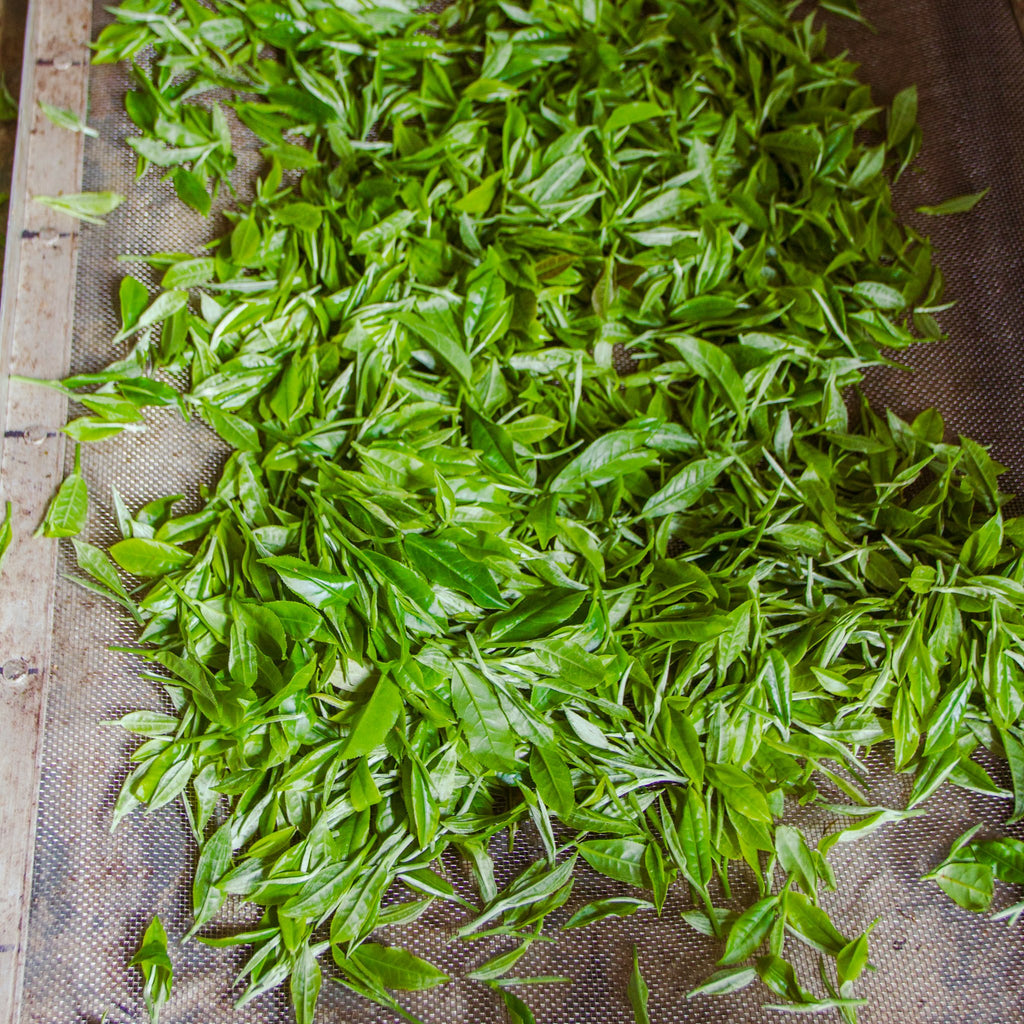Types of Tea

Tea has a rich history and a wide variety of flavours, from floral to fruit, nutty to smoky, candied to umami, all influenced by its terroir, time of harvesting and processing methods.
The are 6 main categories of tea which each slightly different processing methods.
White TeaWhite tea is the least processed variety; the tea leaves are simply plucked and then withered. The withering process can either be done outdoors under the sun or in temperate controlled rooms, gently turning it at intervals to ensure even drying. Over time (around 72 hours) a small amount of oxidation does occur. While it is a simple process, there is no room to hide so it takes enormous skill to produce a good white tea. A famous example of a white tea is White Silver Needle tea from China. |
|
|
Green TeaGreen tea is picked and then immediately heated to halt oxidation. This fixes the green colour and fresh flavours of the tea leaves. Different countries use different heating techniques; in China the leaves are commonly pan fried whilst in Japan the tea is steamed resulting in very different flavours and appearance. The tea is then rolled, shaped and goes through a final drying stage. A famous example of green tea is Sencha tea from Japan. |
|
|
Yellow TeaYellow tea was originally resaved for the Emperors of China. The processing method is similar to that of green tea. However, fixing is done at a lower temperature and shorter time than for green tea so that the water does not evaporate as quickly from the tea leaves. The warm, damp tea leaves are rolled and then wrapped in cloth or paper for as few days which induces a slight fermentation process. Finally the tea is then pan fried to remove the remaining water, which turns the tea leaves a yellow colour. Yellow tea has a sweeter and more mellow flavour than green tea. |
|
|
Oolong TeaOolong tea are partially oxidised and are perhaps the most diverse and complex types of tea, sharing some characteristics of green and black teas. The tea is withered and gently shaken to lightly bruise the edge of the leaves, beginning the oxidation process. The tea then goes through various stages of shaking until the tea maker is satisfied with the aroma and appearance of the leaves. The tea leaves are then fired to stop the oxidation process and the leaves are sorted, removing any twigs or other impurities. Oxidations levels can vary from 10% (producing light and fragrant teas) to almost 80% (resulting in far more robust and deep flavours). A famous example of an oolong tea is Ti Kuan Yin (Iron Goddess of Mercy). |
|
|
Black TeaBlack teas are fully oxidised. They will generally go through four stages; withering, rolling, oxidising and drying. The withering stage reduces the water content to about 60-70%. The tea is then rolled to break up the leaves so that the enzymes within the tea can react with oxygen in the air. The leaves are then laid out on tables to oxidises which changes the colour from green to brown and produces aa richer, more robust flavour. The leaves are the dries to reduce the water content to around 3% and then sorted and packed. A famous black tea is Assam tea from India. |
|
|
Pu'erh TeaPu’erh teas go through the same processing stages as black teas but are then fermented over a period of months to many years. They are stored in dark humid places where microbes age the tea, creating complex, earthy and malty flavours. All Pu’erh is from the Yunnan province in China. |
|
|
TAGS:








